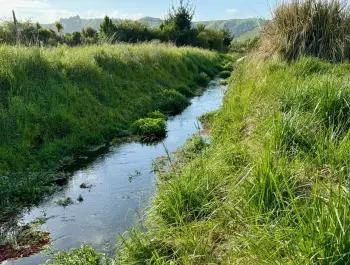

Māori believe water is the essence of all life, likened to the blood of Papatūānuku. Te Mākoura (Mākoura Stream) originates as Te Makakaweka in Upper Plain (Kohangawareware). It winds its way through central Masterton (sometimes underground) to its confluence with the Ruamāhanga River.
This is a project supported under the Better Off Fund, facilitated by Masterton District Council (MDC), and consists of representatives of Rangitāne o Wairarapa, Ngāti Kahungungu ki Wairarapa, Sustainable Wairarapa, Greater Wellington Regional Council (GWRC) and MDC.
On advice from mana whenua, the project widened from “fish passage” to "eco-corridors”, with particular focus on the headwaters (springs) and confluences of the Makakaweka-Mākoura and its tributaries.
Mātauranga (knowledge) is continuously being collected, often by hīkoi (walking the awa) to understand the catchment's whakapapa and priorities for regeneration. Kaumātua Joseph Potangaroa (Ngati Hamua hapu, Rangitāne o Wairarapa, Ngāti Kahungunu ki Wairarapa) has been integral in this navigation. GWRC and Mountains to Sea have measured current biodiversity using observation and eDNA surveys which help the project team to understand what organisms are there but shouldn't be, as well as what organisms should be there but are not. GWRC interns have surveyed and reported on culvert impact on fish passage, with opportunities for mitigation or remedy. Sustainable Wairarapa contributes decades of research of this awa, as well as catchment mapping tools.
In October 2024, the Mākoura Stream Eco-Corridor Project reached a milestone with a significant planting. Close to 3,000 eco-sourced natives were planted at Homebush in one day, minimising disruption to the Waste Water Treatment Plant. Further regenerative planting will occur in this and other sites, with the local community included and empowered wherever possible.
Kirsten Browne is representing Sustainable Wairarapa in the project group.
